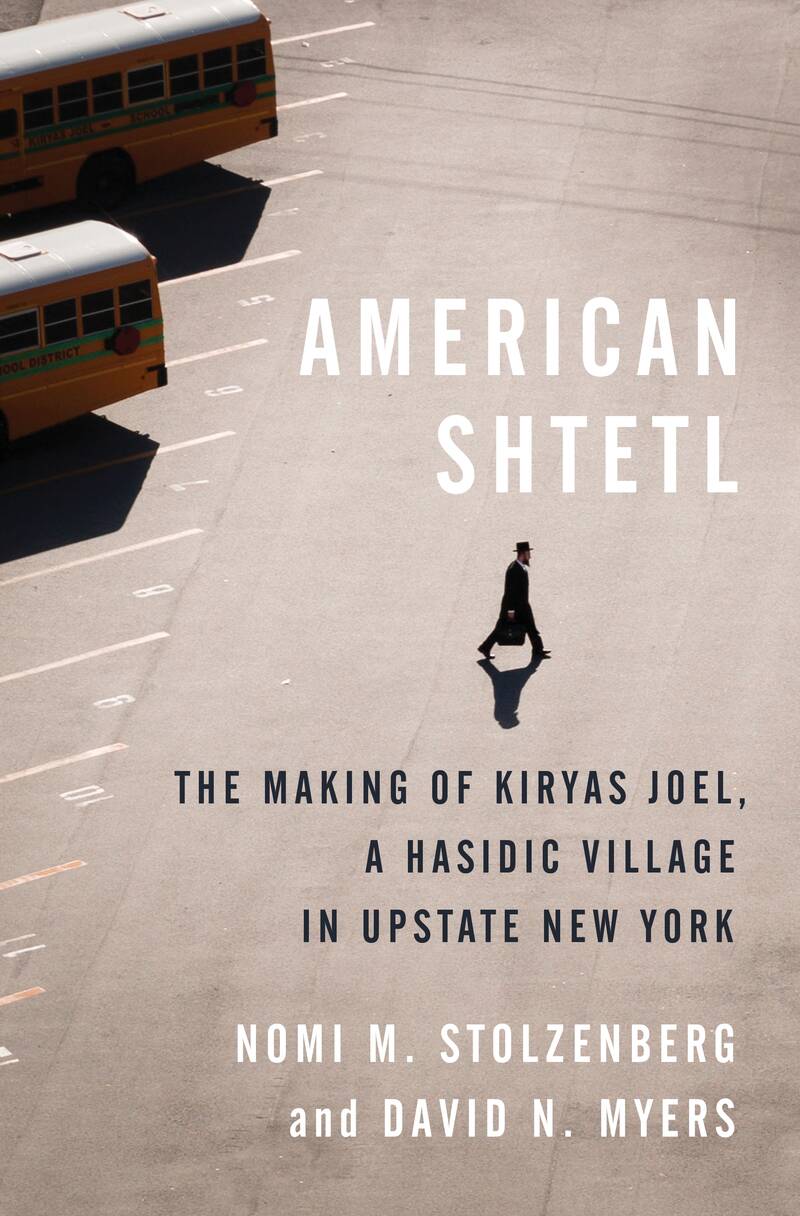JBC Author Series – "American Shtetl: The Making of Kiryas Joel, a Hasidic Village in Upstate New York"
Thursday, December 1, 2022 • 7 Kislev 5783
7:30 PM - 9:00 PMVirtualNomi M. Stolzenberg & David N. Myers
Thursday, December 1 at 7:30 PM via Zoom
Register Here
Nomi M. Stolzenberg and David N. Myers have written a heavily researched, readable, and exceedingly interesting history of Kiryas Joel, the Satmar Hasidic community established in 1977 within the boundaries of upstate Monroe, New York. It was named for Joel Teitelbaum, its beloved leader, who sought to establish a community of true believers who would live, study, pray, and procreate in a Torah-true environment bereft of modern temptations.
Teitelbaum died in 1979, and Kiryas Joel has flourished beyond even his most fervent expectations, but not, as American Shtetl argues, in a manner that he would have always welcomed. KJ has grown from a few hundred residents to nearly twenty-five thousand today, and town authorities anticipate its population will increase to nearly seventy-five thousand by 2035. This phenomenal growth is due to an exceptionally high birth rate, combined with the migration of Satmar devotees attracted by its excessively insular and rigorous religious lifestyle. Although not the first, KJ is unquestionably the most significant Jewish utopian community in America, and it is, as the title of this book implies, not merely a shtetl but an American shtetl, and its history is “an especially fascinating manifestation of American identity politics.”
American Shtetl also provides a detailed analysis of the various legal battles that accompanied the growth of KJ and often led to violent confrontations. These instances mostly involved church-state issues and control over the town’s religious institutions. Some town residents feared that involvement in the secular legal system would undermine Teitelbaum’s hallowed goal of isolating the town’s residents from the non-Jewish world. Other dissidents in the town took an opposite approach. They accused the town’s leadership of seeking to create a “theocracy.” This legal history of KJ is fascinating and thought-provoking.
American Shtetl is the second book on Satmar Hasidim in America recently published by a distinguished university press; the other is Nathaniel Deutsch and Michael Casper’s superb A Fortress in Brooklyn: Race, Real Estate, and the Making of Hasidic Williamsburg (Yale University Press, 2021). These two volumes are part of a popular and scholarly fascination with Hasidic Jews in general and the Satmar community in particular. A plethora of television shows, movies, and books have appeared analyzing Hasidic drop-outs, as well as the ability of Hasidic groups to flourish despite the social, economic, and cultural threats to their way of life that they confront daily. How, one might ask, have the Satmar Hasidim and other such groups not succumbed to assimilation? American Shtetl provides many thought-provoking answers to this question.
Click here* to purchase American Shtetl: The Making of Kiryas Joel, a Hasidic Village in Upstate New York
*For each purchase using the link above, the synagogue receives a small commission.

Nomi M. Stolzenberg holds the Nathan and Lilly Shapell Chair at the University of Southern California Gould School of Law. She has written widely on law and religion. Twitter
David N. Myers holds the Sady and Ludwig Kahn Chair in Jewish History at the University of California, Los Angeles. His many books include Jewish History: A Very Short Introduction. Website | Twitter
| Share Print Save To My Calendar |
Wed, October 29 2025
7 Cheshvan 5786
All Events
-
Thursday ,
OctOctober 30 , 2025Thursday Religious School Classes, Grades 2-3
Thursday, Oct 30th 4:00p to 5:30p
-
Thursday ,
OctOctober 30 , 2025Teen Halloween Challah Bake
Thursday, Oct 30th 7:00p to 8:00p
-
Friday ,
OctOctober 31 , 2025ECC Shabbat
Friday, Oct 31st 9:00a to 10:30a
-
Saturday ,
NovNovember 1 , 2025Brotherhood's Thanksgiving Food Drive - Synagogue Vestibule
Shabbat, Nov 1st (All day)
-
Saturday ,
NovNovember 1 , 2025Grade 7 Torah Study
Shabbat, Nov 1st 9:00a to 10:00a
-
Saturday ,
NovNovember 1 , 2025Shabbat Morning Service: B'nai Mitzvah of Cal Kriftcher & Juliet Rubin
Shabbat, Nov 1st 10:30a to 12:00p
| For Complete Community Calendar Click Here |
Worship Schedule
Shabbat "Lech-Lecha" ~ "שבת "לך־לך
Friday, October 31
6:30 pm – Erev Shabbat, worship in person or watch on our Website
Saturday, November 1
9:00 am – Shabbat Havurah Morning & Torah Study, worship and study in person or register here to join via Zoom. Torah Study will take place during Shabbat Havurah.
10:30 am – Shabbat Morning
B’nai Mitzvah of Cal Kriftcher and Juliet Rubin, worship in person or watch on our Website.

Wed, October 29 2025 7 Cheshvan 5786



